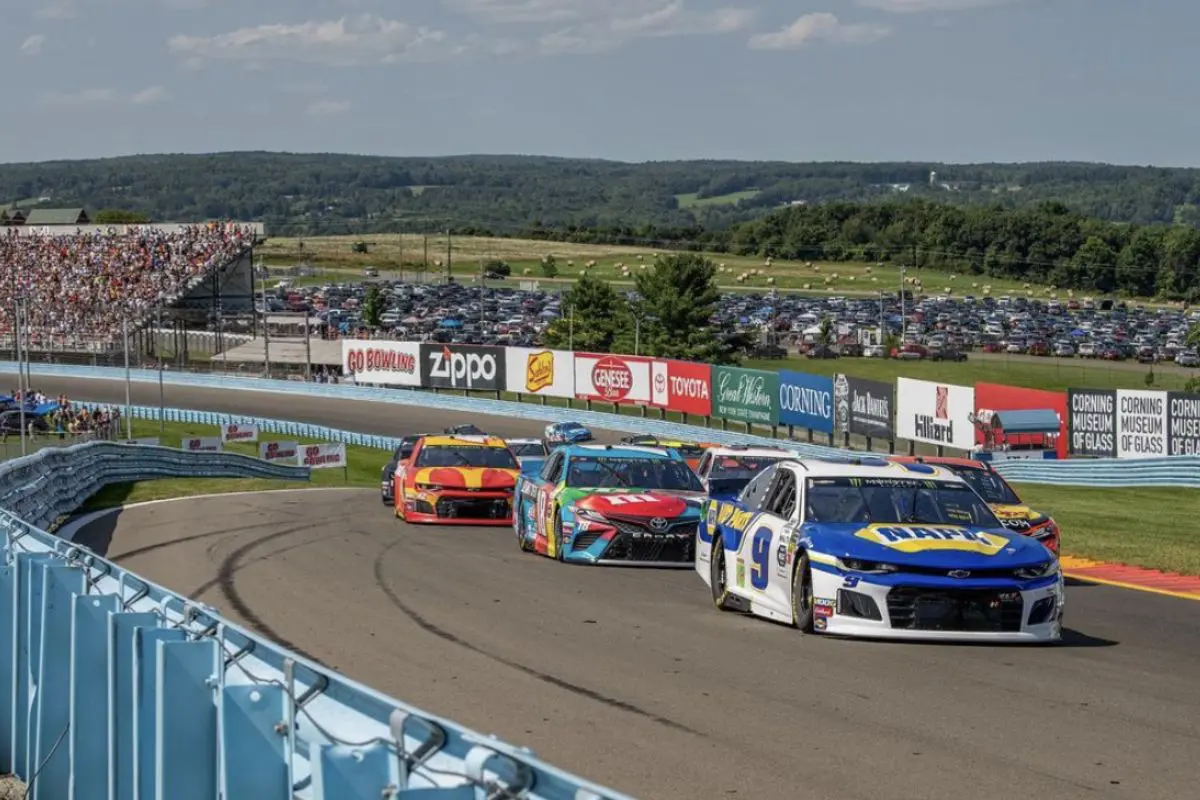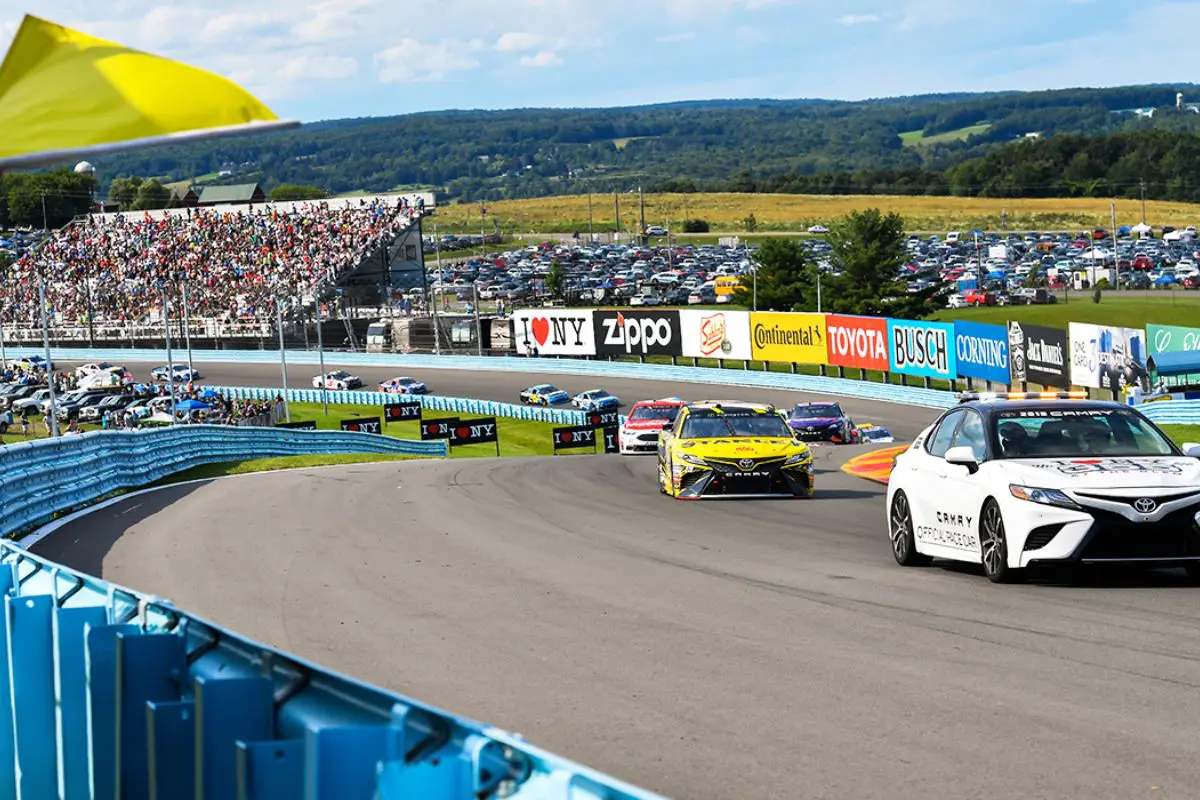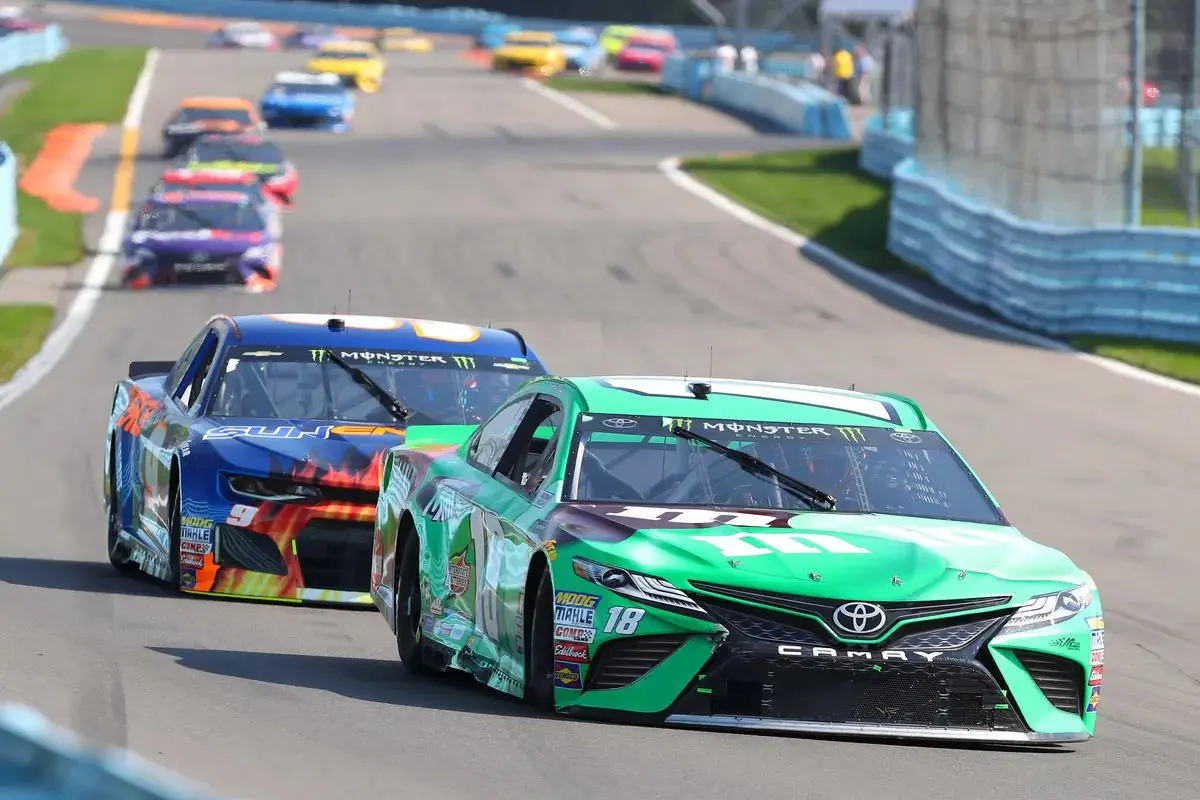Watkins Glen Headache Mystery Solved: The recurring issue of headaches among drivers at Watkins Glen has long puzzled the motorsport community, prompting a closer examination of the track’s unique physical demands. Recent insights reveal that intense G-forces and jarring vibrations, particularly from curbing impacts, are notable contributors to this discomfort. As NASCAR implements modifications to improve driver safety, the implications of these changes extend beyond comfort, raising critical questions about the broader impact on performance and safety standards. What might this mean for the future of racing at such demanding venues?
Key Highlights
- Drivers at Watkins Glen experience extreme G-forces, reaching up to 18 Gs, contributing to severe discomfort and headaches post-race.
- The track’s complex layout and high-speed turns exacerbate physical strain, demanding exceptional skill and precision from drivers.
- Bottoming out on curbs leads to violent impacts, which are a significant cause of headaches for drivers after racing at the venue.
- Differences in car suspension between Cup Series and Xfinity Series affect vibration absorption, impacting driver comfort during races.
- Recent track modifications aim to reduce jarring impacts and improve overall driver welfare, addressing concerns raised by drivers like Aric Almirola.
Unique Challenges at Watkins Glen
At the heart of Watkins Glen‘s allure lies its distinctive challenges, which considerably differentiate it from traditional NASCAR venues. Unlike the expansive, high-speed ovals of Daytona and Talladega, Watkins Glen’s road course demands not only precision driving but also a heightened awareness of the physical toll on drivers. This exceptional environment subjects competitors to extraordinary forces that can culminate in severe discomfort and fatigue.
The complexity of the track, particularly the bus stop curbs at the inner loop, creates conditions that drivers must navigate with remarkable skill. As Kyle Larson has pointed out, these curbs can produce forces of up to 18 Gs on a driver’s head, a staggering statistic that demonstrates the physical strain inherent in racing at Watkins Glen. Such forces are not merely theoretical; they result in tangible effects that can disorient drivers, leading to what many have described as a “headache mystery.”
Furthermore, the combination of high-speed turns and sudden changes in elevation compounds the intensity of the racing experience. The mental and physical demands of maintaining focus in such an environment are immense, as drivers continuously adjust to the track’s rhythm while managing their body’s response to extreme G-forces.
This intricate interplay of skill, endurance, and fortitude exemplifies why Watkins Glen remains an exceptionally challenging venue in the NASCAR circuit, compelling drivers to not only conquer the track but also confront the physical realities it imposes.
Changes Made to Watkins Glen for Driver Safety
Notable modifications have been implemented at Watkins Glen in response to the pressing need for improved driver safety and comfort. Following the unsettling revelations from mouthpiece data that indicated high G-forces endured by drivers, NASCAR recognized the urgency to adapt the track to mitigate these physical stresses.
The disconcerting experiences reported by several drivers during the 2023 Cup Series highlighted the necessity for change, as many felt as though they had been involved in collisions despite the race being largely incident-free.
To address these concerns, several critical adjustments were made:
- Smoother curbing shifts: The notorious bus stop curbs, previously raised and aggressive, have been replaced with more forgiving surfaces that allow for better handling and reduced jarring.
- Enhanced Turn 1 rumble strips: New rumble strips have been installed to deter cars from veering into the runoff area, promoting safer navigation through a pivotal section of the track.
- Focus on driver comfort: These changes aim to alleviate the physical constraints faced by drivers, contributing to a more comprehensive safer and more comfortable racing experience.
Aric Almirola’s Insights on Watkins Glen Challenges
With recent modifications aimed at enhancing driver safety at Watkins Glen, insights from drivers provide a valuable perspective on the challenges inherent in racing on this iconic track.
Aric Almirola, a part-time Xfinity driver for Joe Gibbs Racing, has offered a candid account of the physical toll that racing a Cup Series car at Watkins Glen can impose. Almirola highlighted the violent impact experienced when Cup cars bottom out on curbs, leading to notable discomfort. “It would literally hurt,” he remarked, elaborating that the rigid head surrounds cause the driver’s head to bounce between the sides of the headrest, resulting in severe headaches post-race.
“They bottom out on the shock kilometers and so when you hit those curbs on the Cup cars, it was just violent. We run such tight head surrounds the foam for the headrest that your head just kind of feels like a bouncy ball in between the left and right side of the headrest. And it would literally hurt. Bob, when the race was over Watkins, Glen was probably the worst headache I’ve had of any race that I’ve ever run. It wasn’t from Carbon Monoxide poisoning or from dehydration. It was from my head bouncing off my headrest.” – Almirola
Aric Almirola explains why drivers had severe headaches after racing at The Glen in the Next Gen car from going over the curbs in the bus stop. NASCAR has taken out the curbs while adding a rumble strip closer to the guard rail. pic.twitter.com/OroHJjp8gb
— Bob Pockrass (@bobpockrass) September 12, 2024
In sharp contrast, Almirola noted that driving in the Xfinity series alleviated many of these issues. He attributed this difference to the standard suspension of Xfinity cars, which allows for greater body movement and better absorption of vibrations from the track.
The more forgiving nature of the Xfinity car’s suspension system enables drivers to navigate the high-velocity curbs with less physical strain, thereby mitigating the risk of headaches.
Almirola’s insights highlights the complexities of vehicle dynamics in racing and highlight the need for continuous evaluation of car design in relation to driver safety.
Aric Almirola’s NASCAR Experience
A wealth of experience defines Aric Almirola’s NASCAR career, as he has successfully navigated all three major formats of the sport. His tenure in the NASCAR Cup Series, where he drove the No. 10 for Stewart-Haas Racing, culminated in three victories before his retirement in 2023.
Almirola’s adaptability is significant, allowing him to shift seamlessly to part-time roles in the Xfinity Series and the Truck Series.
“The Xfinity cars run more on standard suspension. So it’s not as violent because the car is a bit more forgiving. There is a lot more body movement in the Xfinity cars. The Xfinity cars sought to absorb the high velocity of the curb better. But the Cup cars are more rigid and they run stuff.” – Almirola
In the Xfinity Series, Almirola pilots the No. 19 and 20 Toyota Supras for Joe Gibbs Racing, having amassed five career wins, with his latest triumph occurring at Martinsville in the current season. This success reflects both his competitive spirit and skill in managing different kinds of racing vehicles.
Almirola’s experience is further enriched by his involvement in the Truck Series, where he drives the No. 16 Toyota Tundra for Hattori Racing Enterprises.
His multifaceted career can be summarized through key aspects:
- Versatility: Competing in the Cup, Xfinity and Truck Series demonstrates his diverse skill set.
- Consistency: Achieving wins across multiple formats highlights his ability to adapt to different racing conditions.
- Strategic Insight: Almirola’s experience allows him to provide valuable insights into racecraft and vehicle dynamics.
Iconic Moments at Watkins Glen
Watkins Glen International has long been a stage for unforgettable moments in NASCAR history, showcasing the skill and determination of some of the sport’s most iconic drivers. Among these moments, Kyle Busch’s triumph in 2008 stands out vividly. That year, Busch not only secured victory at the challenging 2.45-mile road course but also etched his name in the record books by achieving the most wins in a single Cup Series season with eight victories. His performance at Watkins Glen was emblematic of his dominance; he led 52 of 90 laps and expertly navigated a major multi-car wreck, demonstrating both tactical insight and precise driving.
Equally remarkable was Tony Stewart’s performance in 2005, where he established a track record by leading 83 of 92 laps. Stewart’s mastery at Watkins Glen is not just reflected in this race; with five wins and numerous top-five finishes at the venue, he has cemented his legacy as one of the track’s all-time greats.
These iconic moments are not merely historical footnotes; they encapsulate the essence of NASCAR racing—where skill, strategy, and resilience converge.
As we look forward to upcoming playoff races, the question remains: will new legends arise, or will the echoes of past triumphs continue to resonate through the asphalt of Watkins Glen? The anticipation of future races fuels ongoing discussions among fans and experts alike, ensuring that the legacy of this storied track endures.
News in Brief: Watkins Glen Headache Mystery Solved
The investigation into the headaches experienced by drivers at Watkins Glen reveals a complex interplay of extreme G-forces and track-induced vibrations. Modifications to the track, including smoother curbing and improved rumble strips, represent a critical response to these challenges, prioritizing driver safety and comfort. Insights from experienced drivers like Aric Almirola underscore the urgency of addressing these physical stresses, highlighting the ongoing need for innovation in design and safety measures within the demanding environment of NASCAR racing.
ALSO READ: Watkins Glen’s Most Dangerous Spot: Insiders Expose the Playoff-Ending Trap




